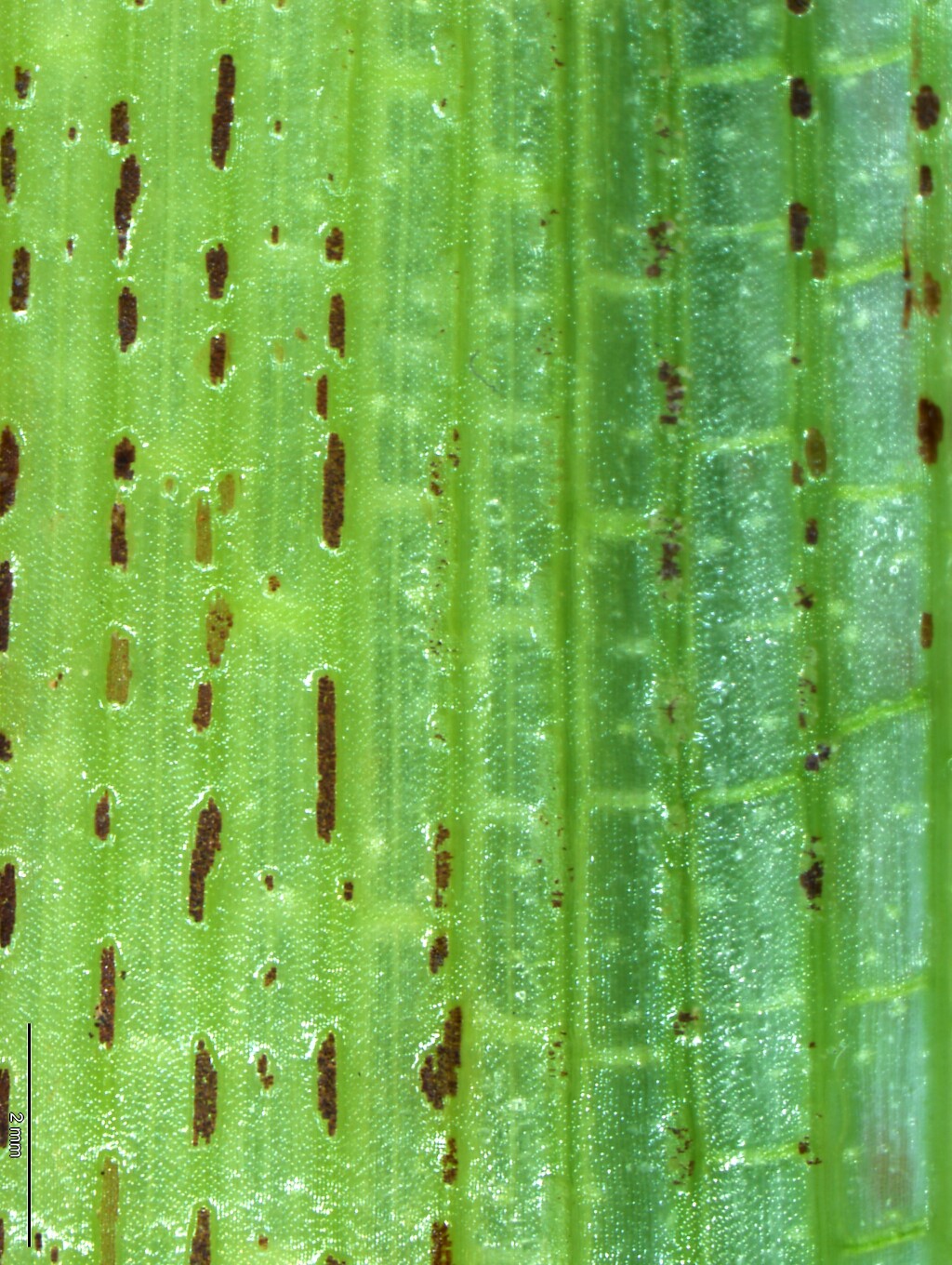Typha
Robust herbs, perennial, monoecious; rhizomes branched; branches (shoots) erect, simple and emergent when growing in shallow water, inner tissue soft and pithy. Leaves alternate, distichous, mostly inserted near base of branches, with sheath at base; lamina long and narrow, flattened, parallel-veined. Inflorescence terminal, complex, composed of 2 very densely flowered, cylindric spike-like parts; male flowers forming the distal part, distinct from the basal part which contains female flowers, sterile 'female' flowers present amongst the female flowers. Flowers unisexual, very numerous, each usually subtended by bristle-like bracts. Male flowers with perianth absent or of 1–3(–8) slender bristles or scales; filaments free or joined for most of their length; anthers with a broad connective which is extended beyond the anther-locules. Female flowers with perianth of numerous fine bristles or narrow scales; carpel 1, on a stalk which elongates in fruit; ovary superior; style terminal, persistent and elongating in fruit; stigma ± expanded. Fruit small, dry, 1-seeded, eventually opening by a longitudinal slit; seed with copious endosperm.
About 15 species; 2 species native and 1 naturalised in Australia and Victoria.
There are two types of carpels in sterile 'female' flowers. One type is similar to that of fertile female flowers except the ovary and ovules are imperfectly developed. The second type has a modified carpel-stalk terminating in a short style, without an expanded stigma. For a discussion of the inflorescence and the reduced flowers, see Briggs & Johnson (1968).
During spring and summer, young shoots have been pulled up and eaten raw by Aboriginal people (Oates & Seeman 1979).
Vegetative features cannot be relied on to distinguish between the species; identification requires critical examination of the bracts, stigmas and styles. Care must be taken when identifying over-mature inflorescences, since parts or all of the stigmas and bracts may have fallen off.
The key to the species is based on Briggs & Johnson (1968).
Conn, B.J. (1994). Typhaceae. In: Walsh, N.G.; Entwisle, T.J., Flora of Victoria Vol. 2, Ferns and Allied Plants, Conifers and Monocotyledons, pp. 631–633. Inkata Press, Melbourne.
 Spinning
SpinningBriggs, B.G.; Johnson, L.A.S. (1968). The status and relationships of the Australian species of Typha. Contr. New South Wales Natl Herb. 4(2): 57–78.
Oates, A.M.; Seeman, A. (1979). Victorian aborigines: plant foods. National Museum of Victoria.




